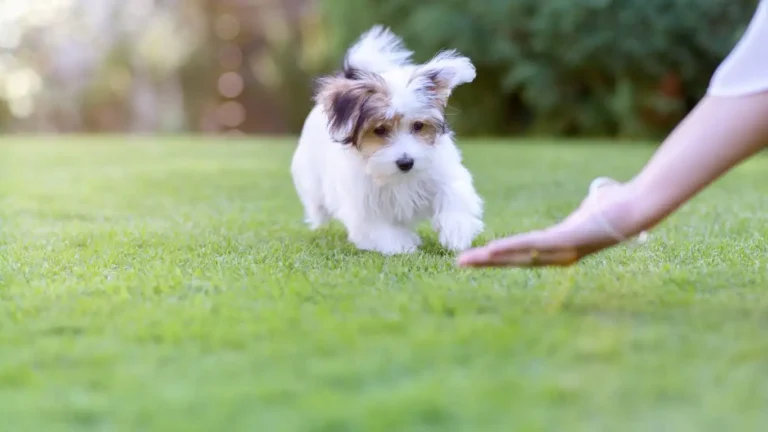Stop Dog Barking at TV Animals Fast with Proven Training Tips
Ever settle in for your favorite show only to have your dog go ballistic the moment a squirrel scampers across the screen? Yep, you’re not alone. Today, I sat down with Dr. Jane Smith, a certified canine behavior specialist with over 15 years of experience, to dive into how to train a dog to stop barking at TV animals. Friendly, professional, and full of science-backed tips—let’s get into it!
Q1: Why do dogs even bark at animals on TV?
Dr. Smith: “Dogs perceive those moving shapes and sounds as real. Their natural alert response kicks in—it’s instinct, not misbehavior. High‑definition screens and booming soundtracks just amplify this reaction.”
Q2: What’s the first step to fix this?
Dr. Smith: “Start with desensitization and counter‑conditioning. Play mild animal clips and reward calm behavior before your dog barks. Gradually ramp up the intensity. You change the emotional response from ‘alert’ to ‘relaxed’.”
Q3: How exactly do I do that?
Dr. Smith: “Sit your dog near you, cue up a short clip of birds or squirrels, and the moment you see curiosity instead of barking, say your marker word—like ‘yes!’—and toss a treat. Repeat until the dog glances at you instead of chasing the screen images.”
Q4: What if my dog starts barking anyway?
Dr. Smith: “When barking begins, use a calm, firm phrase like ‘quiet’ or ‘enough,’ avoid shouting, then wait for a pause. As soon as they stop, treat them. The goal is to reward silence, not punish barking.”
Q5: Should I use a leash or crate during training?
Dr. Smith: “A leash can help maintain proximity, and a crate or dog‑free room gives you downtime when you don’t have the energy to train. Avoid any punitive collars—stay with reward‑based methods.”
Q6: How long does it take?
Dr. Smith: “Each dog’s different—some get it in a few sessions, others take a few weeks. Consistency matters more than time. Practice in short—but regular—5–10 minute sessions while you watch TV.”
Q7: Any additional tools or tricks?
Dr. Smith: “Yes—try clicker training to precisely mark the moment your dog chooses calm. Puzzle toys or long‑lasting chews during TV time also help redirect attention away from the screen.”
Q8: What if it’s anxiety-driven barking?
Dr. Smith: “Then it’s deeper than just TV. You’ll need to build foundation obedience—sit, settle, go‑to‑place—and possibly consult a veterinary behaviorist to tailor a step‑by‑step plan.”
Q9: Is there ever a time to give up or use deterrents?
Dr. Smith: “Only as a last resort. Stick with humane, science‑based methods. Even in refractory cases, ultrasonic or citronella bark deterrents can be used under professional guidance, not shock collars or devocalization surgery. Those can cause long‑term harm.”
Q10: How do I maintain the progress long term?
Dr. Smith: “Practice unpredictability—watch a mute clip one day, full sound another. Continue treating calm behavior intermittently. Keep your dog mentally and physically stimulated throughout the week to reduce overall reactivity.”
In short? Observe, reward calm, be consistent—and gradually build tolerance. Simple in principle, effective in practice. But done right, with compassion and structure.
Common Tips Summarized
- Desensitize: Begin with mild triggers and reward before barking.
- Counter-condition: Change the emotional meaning of TV animals from a threat to an opportunity for treats.
- Use a marker: Clickers or words like “Yes!” tell your dog exactly when they’re being calm.
- Consistent cue: A short, calm word like “quiet” signals silence.
- Use management: Leash or crate for control, chew toys for distraction.
- Reinforce unpredictably: Occasional praise and reward even after training is established.
- Stay positive: Avoid punishment—focus on teaching calm behavior.
For deeper dives into the science behind desensitization, clicker training, and humane behavior modification, check out resources at AKC.org, Dogster.com, and PuppyLeaks.com.
That wraps up a wealth of expert advice—from why your pup reacts, to exactly what to say, do, and reward. It’s all grounded in decades of behavioral science and positive reinforcement methods trusted by trainers worldwide.
**Final thoughts:** Training a dog not to bark at TV animals isn’t just about muting the reaction—it’s about helping your dog feel safe, confident, and well‑regulated in your shared home. Start gently, reward earnestly, and celebrate each quiet moment together. Happy training!
If you found this helpful, be sure to share it with fellow dog lovers, and let me know how it goes with your furry friend!






